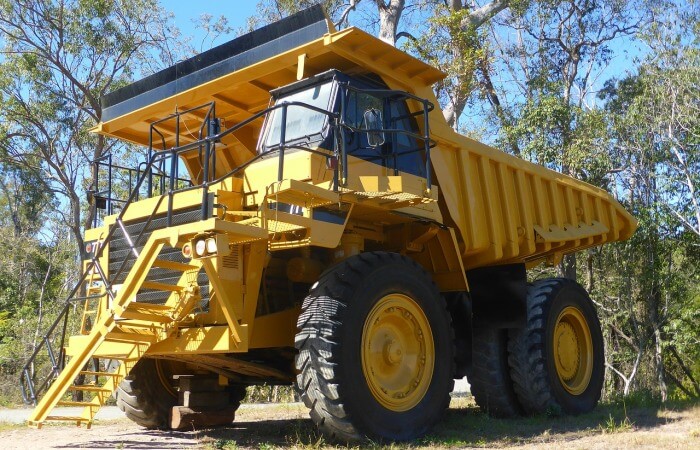Dump truck, kinds, types and classes, construction and working equipment

Dump truck, kinds, types and classes, construction and working equipment.
The truck is self-propelled crawler or wheeled machine with an open body, designed for transportation, unloading and distribution of material that is loaded by external means or equipment for self-service download.
Kinds, types and classes of trucks
Construction and operating equipment (engines) of the truck
Dump truck:
Freight car, able to unload, better known as the dump truck is one of the most popular types of specialized equipment. Its main purpose is to work on the roads of General importance, but this machine is successfully used practically in all industries: agricultural, construction, mining, and others.
The truck is self-propelled crawler or wheeled machine with an open body, designed for transportation, unloading and distribution of materialthat is loaded by external means or equipment for self-service download.
A dump truck is one of the types of self-unloading vehiclehaving a different configuration depending on the equipment. For example, trucks can be equipped with a trailer, a semitrailer with a body, a body bunker type or other bodywork.
Unloading the truck is automatic, in most cases by means of hydraulic mechanisms. Rarer trucks, unloaded at full tilt the entire vehicle with the participation of the telescoping screw lifts or forced unloading.
The main purpose of the truck – transportation crumbly, loose or small piece cargoes. It can be dry cargoes carried in bulk (ore, ore concentrates) that justifies the use of dumpers in mining. It can be goods carried in bulk (grain, sugar, fertilizer), which solved the problem of transportation in agriculture. Found use machine with automatic unloading in road service: they are eliminated from the roads snow drifts, and utilities – is the export of garbage to landfills.
Have truck and a fairly narrow, specific purpose – it is used at the opening and mining of quarry (open) method.
Trucks – universal type machines, used for transporting a variety of cargo types. To accomplish this, they must meet two main criteria – to be reliable and hardy. These qualities, as well as reduced handling, allows you to apply it across the country – in many branches of industry and agriculture, and to address particular issues: home construction, harvesting of the crop on small farms , etc.
Kinds, types and classes of trucks:
The truck is considered to be specialized equipment of wide purpose. However, the ability to use the machine in different branches of industry and agriculture due to its design, but rather the differences in it. So, the trucks will unite at the classes and types depending on the configuration.
According to the method of discharge (unloading) distinguish trucks:
with a rear discharge. It has been mostly large machines with a large capacity transporting loads over 10 tons;
– Donna and unloading. It has trucks with the small their own weight, allowing it to carry more tonnage;
– with lateral unloading. Implies a folding of the right and/or left sides;
– with swivel outlet. Allows to unload the cargo forward, backward or to one side by means of the rotating platform;
– unloading with advanced lifting body. Popular in jobs that loaded highly established bins (e.g., unloading fertilizer in the Stoker, etc.);
– unloading with a rotary platform. It is staffed mainly by crawler dump trucks;
with trilateral unloading. It is typical for machines that are designed to work in the rural sector. Triangular type of loading is one of the most “Bereznik” that allows it to be used for transportation of cereals. Due to this characteristic of the capability of the machine as close as possible to drive up to the place of loading and without significant loss to carry out loading, transportation and unloading of the cargo.
The steering system , the trucks are:
– steering with the front wheels;
– steering articulated frame;
– steering rear wheels;
– steering of all the wheels;
– with the steering boards with the tracked vehicle;
– with the steering boards with the wheel propulsion.
The drive system trucks are divided into:
– trailers with transmission (driven) rear wheels;
– trailers with drive on all wheels;
– trucks drive Central axis;
– trucks with caterpillar drive.
In body type trucks differenziata on:
– dump trucks, having as a body-hopper;
– trucks having as body the platform;
– trucks having as of a body sliding hopper;
– trucks having as body the moving platform.
The type of discharge trucks vary:
– trailers with sloping means of discharge;
– trailers with forced way of discharge.
According to the method of tilting the dump trucks are divided into :
– trailers with hydraulic tilting;
– trucks with the screw (screw) tilting;
– trailers with tilting body;
– trucks with tilting by means of a telescopic lift.
Weight of transported cargo trucks are classified into:
– small – up to 2 tons;
medium – from 2 to 10 tons;
– heavy – from 10 to 30 tons;
– XH – 30 tons.
The shape of the body are:
– trailers with rectangular body. Rectangular body – a classic design, which is in use for transportation of the entire volume. The disadvantage is the difficulty of purification of the body at the joints, in the corners. Advantage – low centre of gravity, which characterizes a car as the most stable of all the types;
– trailers with a body style in the form of powellites. This form has a high center of gravity and a small useful volume, but the lack of corners allows you to extract all the contents of the body. In connection with the existing deficiencies form is discontinued;
– trailers with a body style in the form of a trough. This body of semicircular cross section, a cross between polyellipsoid and a rectangle that overcomes the shortcomings of the first and keep the dignity of the second. Benefits are no angles, there are tilted side walls (the problem of self-purification of the body), and a large useful volume;
– trailers with a body style in the form of a ladle. Bucket – the classic type of the body;
– trailers with a body style in the form of a scoop. Unlike the bucket scoop has a raised rear wall, characterized by low storage capacity, low angle of body tilt (60 degrees), bulkiness and the weight of the whole structure.
On the basis of the destination the trucks are divided into the following types:
– road dump trucks. The most popular type of machines designed primarily for the transport of goods on roads with asphalt coating, but with a high patency rates in conditions of rough terrain and off-road. The maximum tonnage of such machines does not exceed 40 tons, their purpose they are usually found in construction, agriculture (harvesting), in industries for the extraction and processing of minerals, consist on balance of the municipal services;
– dumpers. The second name – off-road. The key characteristic is: the enhanced capacity and increased payload of these trucks can carry up to 45 tonnes of cargo. Most often this technique is equipped with rear-wheel drive, less frequent-wheel-drive models. The maneuverability of these vehicles, designed primarily for mining and overburden removal is low enough, they are not able to develop a high speed. Typically used together with the excavator;
– articulated dump trucks. Also known as zemlioi. A distinctive feature is the presence of articulated frame between the cab car and his body. Also, this technique is characterized by high maneuverability and the ability to move on any roads with a fairly high speed. Their capacity ranges from 10 to 50 tons;
– underground dump trucks. This car is a technique used mainly on mines, pits, and cuts, characterized by a trunk with a low slope. They are the tractors equipped with trailers on a double swivel hitch. The load capacity of such trucks can be as small (1 ton) and heavy (40 tons).
Construction and operating equipment (engines) of the truck:
The design of the truck includes:
– Frame. Designed to absorb the bumps on uneven roads. Depending on the type of machine it may be solid and is located on top of axles or consisting of two welded half-frames connected by a hinge (articulated cars). In the latter case, improves the permeability of the truck, increased the use of its adhesion mass.
– Steering. Consists of the steering gear, steering gear (levers, thrust) and a hydraulic amplifier. Depending on the configuration of these cylinders can be two, which provides increased turning and improves maneuverability.
– Suspension. Can be front or rear. In the classic version – a dependent structure, representing the axle beam attached to the frame trailing arms and transverse thrust.
– Engine. Mostly diesel. Its design is constantly being improved to meet international environmental standards. As additional equipment is equipped with a powerful refrigeration system, designed to ensure the proper operation of the machine at high load and low speed of movement.
– Transmission. May be hydro-mechanical (trucks with a low load), and Electromechanical (high and heavy load).
– Management. The cab shall have a seat for the operator and have a wide all-round view. Modern models are equipped with rear view camera, the image which is displayed on the monitor, protecting the driver from falling objects, eliminate the tipping of the cab, have a tilt mechanism to allow access to its units.
Trucks can be fitted with additional equipment. For example:
system of prestarting heating of the engine;
– heated fuel to the engine;
– system auxiliary heating cabin;
– the heating system of the body.
Also the truck may have additional equipment:
– hinged tailgate;
– extension sides, used for light, easily deformable goods;
– protection with increased durability for underbody;
– system of weighing of cargo;
– heated and electrically controlled mirrors;
– additional floodlights;
system centralized lubrication and other.
Note: © Photo ,



